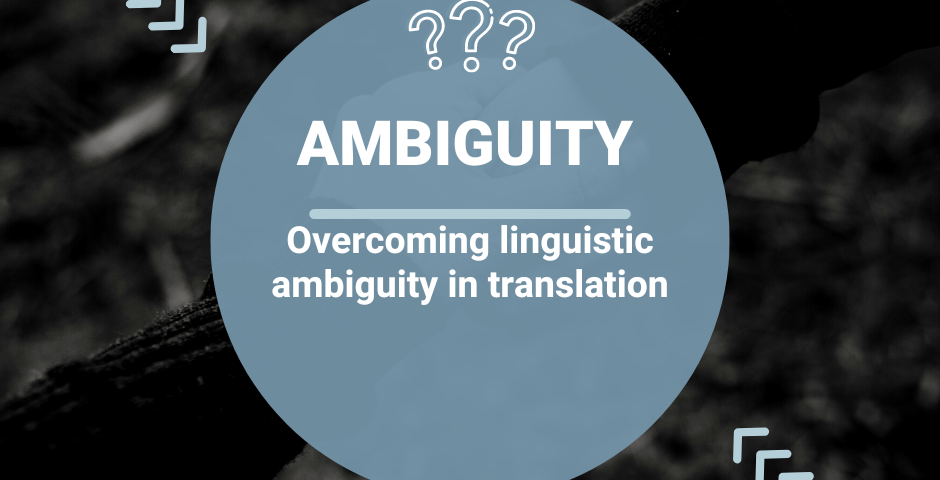Ambiguity in translation can be a major issue when trying to convey the meaning of a text from one language to another. One example of this is the use of the terms “toes” and “fingers” in English, which can be translated to “dita” and “doits” respectively in Italian or French or vice versa.
The problem with this is that the terms “dita” and “doits” corresponds to both toes and fingers and without context, both translations could be misleading and cause medical mistakes.
In this case, one solution to this problem is to use the more specific term “digits” when referring to toes and fingers. This term is commonly used in anatomy and medicine, and is less likely to be ambiguous or open to multiple interpretations. Using the more specific term, the translated text will be more clear for the readers and there will be less chance for any kind of confusion.
In our industry, it is often not possible to contact the author of the source document, but obviously the optimal solution would be to do so.
It’s always important to keep in mind how much context matters in translations, be aware of the connotations and cultural references that might cause problems and considering all possible ambiguities. Also, it’s useful to have an expert translator or a language review to avoid any kind of mistakes and make sure that the translated text conveys the intended meaning.
But, let’s delve into ambiguity a bit further as ambiguity in translation can take several forms, and understanding these different types of ambiguity is crucial for effectively conveying meaning in a translated text.
The four main types of ambiguity in translation are lexical ambiguity, syntactical ambiguity, semantic ambiguity, and pragmatic ambiguity.
- Lexical ambiguity occurs when a word or phrase has multiple meanings in the source language, making it difficult to choose an appropriate equivalent in the target language.
- Syntactical ambiguity occurs when the structure of a sentence in the source language can be understood in multiple ways
- Semantic ambiguity occurs when there is a lack of context or meaning, when certain phrases are open to multiple interpretations, this is often related to idiomatic expressions or cultural references.
- Pragmatic ambiguity occurs when the meaning of a text is influenced by the context in which it is used, such as the speaker’s tone of voice or the reader’s background knowledge.
It is essential for a translator to have a deep knowledge of both languages (target and source) to make sure to avoid ambiguity.
How to avoid creating ambiguity into your target
To avoid introducing ambiguity into your target text, there are several steps you can take. One of the key strategies is to use more specific words or phrases that convey a clear meaning. For instance, you can replace words like “while” with alternatives such as “whereas” or “during” that are more precise in their meaning. Another important step is to be aware of the different meanings and connotations of target words or phrases in a given context. For example, a phrase like “growing area” in the context of agriculture might have multiple meanings depending on the context, such as an area that is increasing in size or an area that is used to grow living things. It’s also important to use compound adjectives correctly, such as “more-urgent care” and “more-accessible facilities” to indicate that they are more of a particular quality, and not a larger quantity of that. When translating, it’s also important to be mindful of the grammar and sentence structure. This includes things like whether adjectives modify one thing or everything else in a list, or whether to use numbering, punctuation or lettering to split up lists for clarity. Finally, it’s essential to think about how the translation will be understood by others.
Consider whether the translation is too vague or if it might be difficult for someone else to understand the intended meaning. By being mindful of these issues and taking steps to avoid them, you can ensure that your translations are clear and accurate.


